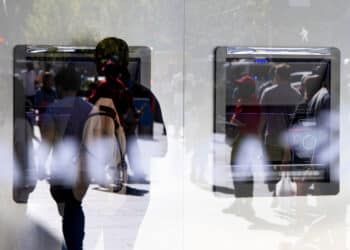Helping Lenders Market To Younger Consumers
We wrote recently about how fewer younger people are driving, and those who are, are driving less.
That has made the job of marketing to millennials much harder. But there have been a number of recent articles and events aimed at brand positioning toward younger Americans, and understanding where a car purchase fits in their list of priorities.
Where owning a cellphone is more a staple of establishing independence than owning a vehicle, and where the negative stigma once associated with borrowing or renting has been turned on its head, marketing cars to younger people has never been more difficult.
Ford Motor Co. recently convened an event in New York to discuss marketing its automobiles to younger consumers. Where horsepower used to be what kids were looking for when they purchased a car, the priority is now more about connectivity than anything else. The digitization of cars was called “online oxygen” by one Ford executive.
Making matters more complicated is the penchant for younger consumers to want to be more involved with their brands, a notion of brand participation. Millennials represent 80 million consumers, 61% of whom rate products and provide feedback online, and 63% of whom want to do business with socially responsible companies.
What does all of this mean for auto finance companies?
Lenders need to adapt their marketing strategies when trying to reach younger audiences. A mass-market approach will likely not engage with millennial car buyers. Using technology and social media with a marketing message is likely to have a higher penetration rate. Lenders should also be touting their multiple payment options as a way of illustrating flexibility.
It’s very important for lenders to continue trying to reach millennials. They are predicted to purchase 40% of all new vehicles within the next 10 years.
We wrote recently about how fewer younger people are driving, and those who are, are driving less.
That has made the job of marketing to millennials much harder. But there have been a number of recent articles and events aimed at brand positioning toward younger Americans, and understanding where a car purchase fits in their list of priorities.
Where owning a cellphone is more a staple of establishing independence than owning a vehicle, and where the negative stigma once associated with borrowing or renting has been turned on its head, marketing cars to younger people has never been more difficult.
Ford Motor Co. recently convened an event in New York to discuss marketing its automobiles to younger consumers. Where horsepower used to be what kids were looking for when they purchased a car, the priority is now more about connectivity than anything else. The digitization of cars was called “online oxygen” by one Ford executive.
Making matters more complicated is the penchant for younger consumers to want to be more involved with their brands, a notion of brand participation. Millennials represent 80 million consumers, 61% of whom rate products and provide feedback online, and 63% of whom want to do business with socially responsible companies.
What does all of this mean for auto finance companies?
Lenders need to adapt their marketing strategies when trying to reach younger audiences. A mass-market approach will likely not engage with millennial car buyers. Using technology and social media with a marketing message is likely to have a higher penetration rate. Lenders should also be touting their multiple payment options as a way of illustrating flexibility.
It’s very important for lenders to continue trying to reach millennials. They are predicted to purchase 40% of all new vehicles within the next 10 years.















